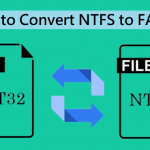As a cloud-based solution, push notification as a service(PNaaS) frees mobile app developers from the tedium of managing the infrastructure necessary to provide push notifications inside their applications.
With PNaas, app developers just need to make use of an API to notify users, while the service provider takes care of actually getting the messages to the consumers’ devices. Targeting based on user behavior, audience segmentation, tailored communications, and in-depth analytics are just some of the functionality and customization choices offered by PNaas providers.

NashPush is one of the best in the industry. Its technology ensures that messages are delivered quickly and reliably, while analytics take a comprehensive view of the user’s preferences.
The advantages of making use of a service that provides push notifications
As a service, push notification as a service has various benefits for the mobile app development industry:
- Since providers take care of the infrastructure required to transmit alerts to a large number of users, app developers may simply scale their applications without worrying about maintaining their own infrastructure.
- The danger of alerts being lost or delayed is minimized because of the redundant systems used by most platforms.
- Developers only have to pay for the alerts they send thanks to the pay-as-you-go pricing mechanism offered by providers. This has the potential to both save expenses and expand available options.
- To help app developers provide more interesting and useful alerts, providers often give a variety of functionality and customization choices, such as targeting based on user activity, audience segmentation, tailored messaging, and in-depth statistics.
- To aid app developers in getting up and running fast and troubleshooting any difficulties that may emerge, these platforms often provide customer assistance in the form of documentation, tutorials, and helpdesk services.
As a whole, app developers may find utilizing automated messaging systems to be an efficient, scalable, and inexpensive method to add automated messages to their applications, with the added bonus of access to the functionality and customization choices provided by external service providers.
The cons of using PNaas
This solution has a lot going for it, but there are also some possible downsides to think about:
- Using an automated message system makes app developers reliant on the provider for message delivery. The app’s notification delivery may be disrupted in the event of a provider outage or other problems.
- As the service provider is in charge of the notification infrastructure, app developers have little say in the matter. This may make it harder to identify the source of notice distribution problems and fix them.
- There may be constraints on the level of customization that may be performed, despite the fact that messaging platforms provide many capabilities and possibilities. To design the ideal notification experience, app developers may be limited by the provider’s platform and API.
- Concerns concerning privacy and security are warranted since solution providers handle personally identifiable information (such as device IDs and user activity data). While developing an app, it’s important to work with a supplier that takes user data security seriously.
PNaas may provide numerous advantages to app developers; but, before deciding to employ any particular provider, it is crucial to thoroughly weigh the trade-offs and possible negatives.
Join 25,000+ smart readers—don’t miss out!





